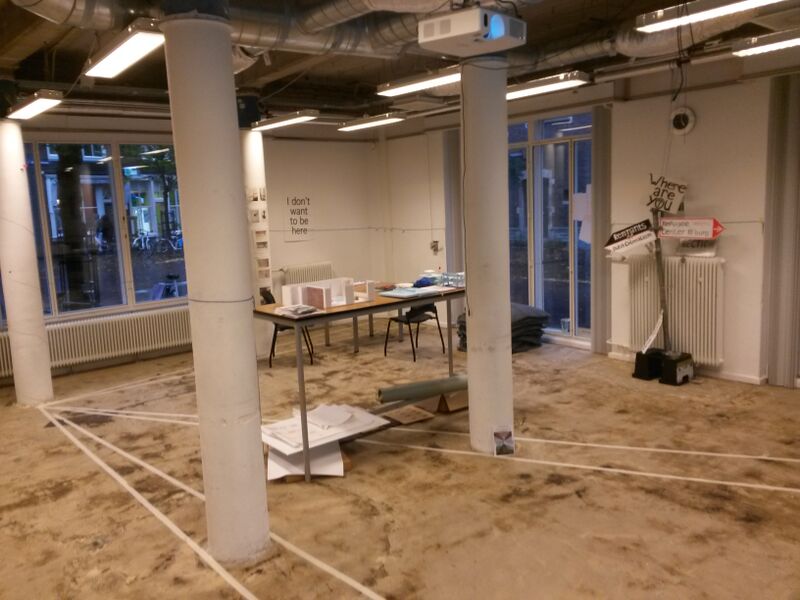What is happening in E11?
by Marijn Thijs
WEDNESDAY afternoon, after a long and tiring class, I walked into what is at this point maybe even the most mysterious room in UCR – Eleanor 11. A room which was stripped of literally everything at the be-ginning of the semester, with windows on which one could leave messages. The atmosphere breathed workspace; Tom Waits music was silently playing in the background, and you could smell the concrete floor. Curious about what is happening in E11, I sat myself down opposite of Sophie Krier – artist and instructor of the new A&H190 Art and Design Practice course, in which 20 students are enrolled this semester.
Sophie Krier is a Benelux citizen (born in Belgium, raised in the Nether-lands, Luxembourgian passport), who engages in what she says to be ‘editorial practice’, doing work on the border of Art and Design, mediating and defining the frameworks of art. These different viewpoints feel very liberating to her, which is highly important for her artistic interests. What is happening in Eleanor 11 is ‘‘an attempt to connect people and places in a meaningful way by stripping a classroom and starting from scratch in order for students to free themselves from the status quo and the habitual ways related to education.’’
The Art and Design Practice course is called as such since the course is practice-based, setting it apart from the more theoretical Art History courses. ‘‘Making is the core, but it is never making without reflecting,’’ Krier mentions. ‘‘Today, we had a two-hour brainstorm session on the propositions of the space we are working in.’’ The class now has two assignments: the first being mapping and making space, focusing on the room in which the work is done. Aspects of space are being researched, reaching from soundscape, to biodiversity, to political potential. The first experiments are being done at this point of the course. The second assignment focuses on networking: UCR lacks the resources an art school would normally possess. Therefore, producers in Zeeland are be-ing researched. The definition of ‘producer’ is very broad; it could reach from a hairdresser to a policy maker. These portraits will then be translated into a map of Zeeland as a means of artistic network building. Krier is happy with the way the course is panning out: ‘‘It is fascinating to see how students grow attached to the space at hand.’’
I proceeded to ask Sophie Krier about the future of this course at UCR. She explained to me that people generally look forward to working on elaborating this new discipline, and that the Art & Design Practice track could lead to links between multiple disciplines. Nele Bartsch, who is one of the students, has taken bacteria samples from the floor, walls and objects present in the room, which were taken to the lab and analyzed together with Ger Rijkers. Now, the bacteria are framed in air tight glass, and once the bacteria grow, the hand painted text will appear there. This is a very creative way of putting space and art together.
Naturally, the stripping down and redecoration of a classroom with a group of 20 people is a one-time occasion. ‘‘This course is a pilot course, but it is a pilot on how to make the track work, not whether the track should happen’’. Faculty and staff are generally in favor of an elaboration of this one course into a full track; something that Krier is also very busy with. ‘‘A track outline is being made and investigated at this point.’’ She explains that there will be at least three courses on three different levels (100 until 300). However, no two courses will be taught at the same time the coming year, due to logistic con-straints. At this point, Krier explains that the 100-level course is most likely to be scale oriented, giving students a taste of Art & Design. The 200-level will be topic driven, with a 300-level focus-ing on context and the editorial aspect with possibly a publication.
Curious about the final result? The project is part of the ‘Kunst en Cultuur-route’ on Sunday December 6th, where E11 will be hosting an open house from 13.00 until 17.00.
Marijn Thijs, Class of 2016, is a Linguistics, History and Economics major from Maartensdijk, the Netherlands.

